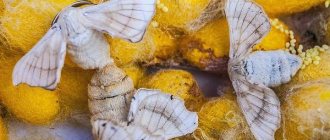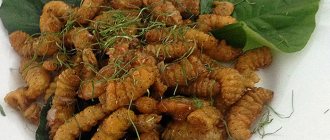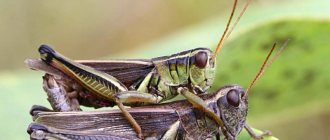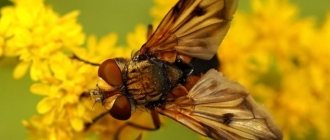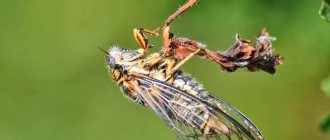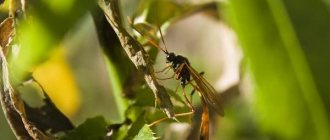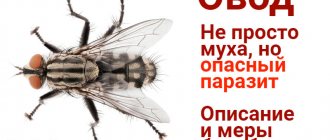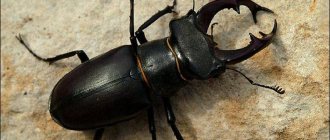- Wild animals
- >>
- Insects
The fashion industry around the world, and any person who prefers clothing made from natural fabrics, are undoubtedly connoisseurs and active consumers of a unique natural product - natural silk. If it weren't for the silkworm , we wouldn't know what silk is. It is impossible to imagine something smoother and more pleasant to the touch and surprisingly comfortable to wear as a ready-made wardrobe item.
Origin of the species and description
Photo: Silkworm
Silk production using silkworms is believed to have existed as early as the Yangshao period (around 5000 BC). Despite the fact that a huge amount of time has passed since then, the basic elements of the production process have not changed to this day. In the international classification, the silkworm is called Bombyx mori (lat.), which literally means “silk death”.
Video: Silkworm
This name is no coincidence. It arose because the main task in silk production is to prevent butterflies from flying out of the cocoon, in order to prevent damage to the silk thread entangling it. For this purpose, pupae are killed inside the cocoons by heating them to high temperatures.
Interesting fact: The dead pupae remaining after unwinding the silk thread are a fairly valuable food product in terms of their nutritional properties.
The silkworm is a butterfly from the family True silkworms. Despite the presence of wings with a span of 40-60 mm, over the long period of development of mulberry production, it has practically forgotten how to fly. Females do not fly at all, and males make short flights during the mating period.
The name eloquently indicates the habitat of these insects - mulberry trees, or mulberries, as they are commonly called in our country. The dark, sweet and juicy fruits of mulberries, similar to blackberries, are to the taste of many, but it is the leaves of these trees that are eaten by the silkworm. The larvae eat them in huge quantities, and do this around the clock, without interruption even at night. If you are nearby, you can hear the rather loud characteristic sound of this process.
After pupating, the silkworm caterpillars begin to weave a cocoon consisting of a continuous, very thin silk thread. It can be white, or it can have different shades - pink, yellow and even greenish. But in modern mulberry production, it is white cocoons that are considered valuable, so only breeds that produce white silk thread are used for breeding.
Interesting fact: Since natural silk thread is a protein product, it can dissolve under the influence of aggressive chemical detergents. This fact must be taken into account when caring for products made from natural silk.
How is silk obtained?
Real high-quality silk is obtained from the cocoons of silkworm caterpillars. And to get such beauty, some people have to try hard, which is why the price of natural silk is always high.
Why is silk so beautiful? Because the thread from which the silkworm spins a cocoon for itself, mulberry, has a unique triangular cross-section and, like a prism, refracts light, as a result we get a beautiful iridescence and shine.
The silk thread is 8 times thinner than a human hair, very durable, because it is designed to protect the caterpillars from hungry insects, and is absolutely water-repellent. Because of this, the fabric is soft and pleasant to the touch, but at the same time durable and wear-resistant. Silk fiber consists of 75% fibroin and 25% sericin. Waxes and fats are also present, as well as minerals. The width of the silk thread is approximately 32 microns, the length can reach one and a half kilometers.
Properties of silk fabric:
- It has average heat resistance - with prolonged exposure to high temperatures, the tensile strength decreases slightly, but the fabric becomes more fragile, the recommended temperature for wet-heat treatment is 110 degrees
- Very low light fastness - after just 200 hours of exposure to solar radiation, the strength is halved
- Silk, like other fabrics made from natural raw materials, is insensitive to the effects of organic solvents (vinegar, alcohol), and reacts only with concentrated solutions of acids and alkalis
- Has good hygroscopicity.
Appearance and features
Photo: Silkworm butterfly
Externally, the silkworm is rather inconspicuous; an adult individual looks like an ordinary moth or a large moth. It has large wings of gray or off-white color with clearly “drawn” dark veins. The body of the silkworm is quite massive, completely covered with a dense layer of light fibers and visually divided into transverse segments. There is a pair of long antennae on the head, similar to two combs.
If we talk about the life cycle of the silkworm, it is necessary to distinguish between wild insects and domesticated breeds. In captivity, the silkworm does not survive to the butterfly stage and dies in the cocoon.
Its wild counterparts manage to live through all four stages characteristic of insects of any species:
- egg;
- caterpillar (silkworm);
- chrysalis;
- butterfly.
The larva that emerges from the egg is very small, only about three millimeters long. But as soon as it begins to eat the leaves of the mulberry tree, doing this continuously day and night, it gradually increases in size. In just a few days of its life, the larva manages to survive four molts and eventually turns into a very beautiful pearl-colored caterpillar. Its body length is about 8 cm, thickness is about 1 cm, and an adult weighs about 3-5 g. The caterpillar's head is large, with two pairs of well-developed jaws. But its main feature is the presence of special glands ending in an opening in the oral cavity, from which it releases a special liquid.
Interesting fact: Due to the exceptional strength of natural silk thread, it is used in the production of body armor.
When it comes into contact with air, this liquid hardens and turns into that famous and unique silk thread, which is so valued in mulberry production. This thread serves as material for silkworm caterpillars to build cocoons. Cocoons come in completely different sizes - from 1 to 6 cm, and various shapes - round, oval, with jumpers. The color of cocoons is most often white, but can have colored shades - from yellowish-golden to purple.
Now you know what a butterfly and silkworm caterpillar look like. Let's see where the silkworm lives.
Eggs
After fertilization, the female lays from 500 to 700 eggs - green. The shape is oval, elongated, flattened on the sides. The size of one egg does not exceed 1 mm in length and 0.5 mm in width. On one side along the length of the grain there is a depression, on the other there is a convexity. The color is off-white, milky, yellowish immediately after laying, purple towards the end of larval maturation. If the color scheme does not change, this means the death of the embryo inside.
The ripening period of greenberries is long; when the temperature drops, metabolic processes slow down and development stops. The female lays eggs in July-August. Development continues in early spring, when larvae emerge from the eggs. At constant high temperatures of more than +15 degrees Celsius, larvae may appear in the same year.
Interesting!
The eggs of the domestic silkworm are placed in the refrigerator, where the temperature is maintained from 0 to -2 degrees Celsius. Under such conditions, a strong, healthy silkworm caterpillar appears in the spring. If the wintering temperature is higher, the young generation will be born weak. This is due to the fact that the caterpillar appears too early, when there is not yet enough food for it.
Where does the silkworm live?
Photo: Silkworm in Russia
It is believed that the birthplace of the modern silkworm is China. Already in the period 3000 BC. its mulberry groves were inhabited by a wild species of insect. Subsequently, its active domestication and spread throughout the world began. In the northern regions of China and in the south of the Primorsky Territory of Russia, wild breeds of silkworms still live today, from which, presumably, the spread of the species throughout the world began.
The habitat of the silkworm today is determined by the development of mulberry production. In order to spread it, insects were brought to many areas with a suitable climate. So, at the end of the 3rd century AD. colonies of silkworms inhabited India, and a little later moved to Europe and the Mediterranean.
For comfortable living and production of silk thread, the silkworm requires certain climatic conditions, without which the insect does not perform the main function consumed by silkworms - it does not form cocoons and does not pupate. Therefore, its habitats are areas with a warm and moderately humid climate, without sudden temperature changes, with an abundance of vegetation, and in particular, mulberry trees, the leaves of which are the main food of the silkworm.
China and India are considered the main habitat of the silkworm. They produce 60% of the world's silk. But thanks to this, sericulture has become one of the important industries in the economy of many other countries; today, silkworm colonies inhabit areas of Korea, Japan, Brazil, and in the European part they are common in certain regions of Russia, France and Italy.
Population
Insects are very prolific in nature and are actively bred in artificial conditions. In both cases, they require similar living conditions. Therefore, independent spread of populations and their importation are allowed only in warm countries. One of the main conditions, in addition to acceptable temperature and air humidity, is the presence of mulberry trees.
Since the silkworm brings many benefits to humanity, its breeding will never stop. Thus, silkworm populations are not at risk of extinction in the natural environment or destruction by humans.
What does the silkworm eat?
Photo: Silkworm cocoons
The main diet of the silkworm is best described by its name. It feeds exclusively on the leaves of the mulberry tree, which is also called mulberry or mulberry. Seventeen varieties of this plant are known, which are distributed exclusively in warm climates - the subtropical zones of Eurasia, Africa and North America.
The plant is quite capricious and grows only in comfortable conditions. All its species are fruit-bearing and have tasty, juicy fruits that look like blackberries or wild raspberries. The fruits vary in color - white, red and black. Black and red fruits have the best aroma; they are widely used in cooking for making desserts and baking, and they are also used to make wine, mulberry vodka and soft drinks.
White and black mulberries are widely cultivated for mulberry production. But the fruits of these trees are not of interest to the silkworm; it feeds exclusively on fresh mulberry leaves. Under natural conditions, mulberry groves are densely populated by this insect. Sericulture breeders who want to get a lot of silk cocoons take care of the plantings of this plant, look after them, creating comfortable conditions for growth - a sufficient amount of moisture and protection from the scorching sun.
On mulberry farms, silkworm larvae continuously supply fresh portions of crushed mulberry leaves. They eat constantly, day and night. In the room where the trays with colonies of larvae are located, there is a characteristic hum from working jaws and the crunching of mulberry leaves. From these leaves, silkworms obtain all the necessary substances for the reproduction of valuable silk thread.
How to use in facial care at home
Without visiting a beauty salon, it is convenient to use silkworm cocoons for homemade cosmetic preparations.
There are various methods. Use in its pure form. Adding to masks, creams, gels, soaps.
The silk shell crumbles and is crushed. Better than a wooden masher. Mixes with the desired product.
We will discuss how to use it with maximum results below:
Massage. The cocoon must be washed. Place in warm water (ten minutes). It can also be consumed hot (not boiling water!). The shell will soften. The volume of sericin will increase. Clean your face, wash your face. Let it dry. After this time, place the cocoon on your index finger. We move along the massage lines with small circular movements. Don't press. It is easy to carry out to avoid damage to the surface of the epidermis. We continue the manipulation for about five minutes. Pay attention to the nose, T-zone. Dry with a damp cloth. Dry. Apply moisturizer. Do not use alcohol-containing compounds. Repeat 2-3 times in 7 days.
The effect is more noticeable when you steam your face before starting.
You gain radiance and renewal. Light lifting.
Wash and dry the white “clumps” of silkworm. Wrap in film and paper. It is advisable to keep it in a dark place.
Preparing the mask. Wash the cocoons (outside, inside). Leave for 10 minutes. in water. Dry saturated with moisture. Grind into powder. Add vegetable oil at the rate of 5 tablespoons to 1 oil. To stir thoroughly. Soften in water (several hours). Beat into a homogeneous mass. Apply from bottom to top (chin - forehead). Keep for a quarter of an hour. Rinse off. Apply cream with soothing ingredients.
Repeat 2-3 times a week.
Silk threads. Dissolve clean dry “balls” (2-3) onto threads. The best option is to get 5-6 fibers. Place briefly in water (t 40-55 degrees) until softened. Cleanse your face. Gently spread the fibers onto your dry face, taking one at a time. Cover with film. We keep it for half an hour. The healing substances will be absorbed. Wipe with a damp cloth. Dry it. Lubricate with cream that saturates with moisture.
Features of character and lifestyle
Photo: Silkworm caterpillar
The centuries-old development of silk production has left its mark on the way of life of the silkworm. It is assumed that wild individuals at the dawn of their appearance were excellent at flying, as evidenced by the presence of fairly large wings in this species of insects, quite capable of lifting the body of a silkworm into the air and transporting it over a considerable distance.
However, under domestication conditions, insects practically forgot how to fly. This is due to the fact that most individuals do not survive to the butterfly stage. Sericulture breeders kill the larvae immediately after the formation of the cocoon so that the butterfly leaving it does not damage the precious silk thread. In nature, silkworm butterflies are quite viable, but evolutionary changes have affected them too. Males are slightly more active and make short flights during the mating season.
Interesting fact: Female silkworms can live their entire short lives - about 12 days - without making a single beat of their wings.
There is evidence that mature silkworms do not eat at all. Unlike the previous form of their life cycle - the caterpillar, which has powerful jaws and continuously absorbs food - butterflies have an underdeveloped oral apparatus and are unable to grind even the lightest food.
Over a long period of domestication, insects became completely lazy; it became difficult for them to survive without human care and tutelage. Silkworms do not even try to find food on their own, waiting to be fed ready-to-eat, finely chopped mulberry leaves. In nature, caterpillars are more active; it is even known that when there is a lack of usual food, they sometimes feed on the foliage of other plants. However, the silk thread produced from such a mixed diet is thicker and coarser, and is not of sufficient value in silk production.
Reviews
Reviews about cocoons are positive. There are practically no negative ones. Here are the typical ones, plus and minus.
Positive
An original approach to cosmetics. Naturalness. Affordable price. I liked the result of exfoliation and massaging. A healthy shine is noticeable. They do not injure. Replacement for peeling. Whitens. No financial costs. Removes blackheads, lifting effect. Easy to use. Economical.
Negative
Not available everywhere. Too lazy to study. Additional time is required.
Social structure and reproduction
Photo: Silkworm
The silkworm is a paired insect that reproduces and has the same life cycle as most butterflies. Currently, many of its species have been bred. Some give birth only once a year, others - twice, but there are also those that are capable of laying eggs several times a year.
During the mating period, males become more active and even make short flights, which is unusual for them in normal times. In nature, one male can fertilize several females. On artificial farms, at the onset of mating season, silkworm breeders place paired insects in separate bags and wait 3-4 days after mating until the female lays eggs. On average, a silkworm clutch contains from 300 to 800 eggs. Their number and size depend on the breed of insect, as does the hatching period of the caterpillar. There are more productive types of silkworms that are most in demand among silkworm breeders.
In order for a worm to hatch from an egg, an ambient temperature of about 23-25 degrees and moderate humidity are required. In mulberry production, these conditions are created artificially by incubator employees, but in nature, laid eggs are forced to wait for favorable conditions for several days. Silkworm eggs hatch into tiny larvae (or silkworms) about 3 mm in size and brown or yellowish in color. From the moment they are born, the larvae begin to eat, and their appetite grows every day. After only a day, they are able to eat twice as much food as the day before. It is not surprising that with such an abundant diet, the larvae quickly grow into caterpillars.
On the fifth day of life, the larva finally stops eating and freezes without moving, so that the next morning, straightening up with a sharp movement, sheds its first skin. Then she starts eating again, devouring it with great appetite for the next four days, until the next molting cycle. This process is repeated four times. As a result, the silkworm larva turns into a very beautiful caterpillar with pearl-colored skin. By the end of the molting process, she has already formed an apparatus for producing silk thread. The caterpillar is ready for the next stage - spinning a silk cocoon.
By this time, she loses her appetite and gradually refuses to eat at all. Its silk-secreting glands are filled with liquid, which is secreted outward and trails the caterpillar everywhere with a thin thread. The caterpillar begins the pupation process. She finds a small twig, twists the future frame for the cocoon on it, crawls into its center and begins to twist the thread around herself, actively working with her head.
The pupation process lasts an average of four days. During this time, the caterpillar manages to use from 800 m to 1.5 km of silk thread. Having finished forming the cocoon, the caterpillar falls asleep inside it and turns into a pupa. After three weeks, the pupa becomes a butterfly and is ready to emerge from the cocoon. But the silkworm butterfly has jaws that are too weak to gnaw a hole in the cocoon to escape. Therefore, a special liquid is secreted in its oral cavity, which, wetting the walls of the cocoon, corrodes them, clearing the way for the butterfly to exit.
In this case, the continuity of the silk thread is disrupted and unwinding the cocoons after the butterfly has flown out becomes a labor-intensive and ineffective process. Therefore, in mulberry farms, the silkworm's life cycle is interrupted at the pupation stage. Most cocoons are exposed to high temperatures (about 100 degrees), at which the larva inside dies. But the cocoon, consisting of the finest silk thread, remains intact.
Sericulture breeders leave a certain number of individuals alive for the purpose of their further reproduction. And the dead larvae left after unwinding the cocoons are readily eaten by residents of China and Korea. The natural life cycle of the silkworm ends with the appearance of a butterfly, which, a few days after leaving the cocoon, is ready to reproduce.
Premises requirements
The room for keeping caterpillars must have thick walls so that the air temperature in it does not exceed +25 degrees. This is especially true in areas with a hot climate, where in the summer the thermometer rises to +40 degrees. Air humidity should be at 70-80%.
It is better to open windows for ventilation at night so that the incoming air is not hot. During the day, windows and doors are closed and covered with cloth. Windows facing south can be covered with a damp cloth.
The room should be spacious enough. For larvae emerging from one portion of grain, at first the area should be 2 square meters, gradually increasing it to 65-70 square meters.
Silkworm caterpillars are susceptible to diseases such as jaundice and rot. Diseases are transmitted through wounds on the skin, so it will be better if the insects do not come into contact with each other. For this you need a large area.
Natural enemies of the silkworm
Photo: Silkworm butterflies
In the wild, the enemies of the silkworm are the same as those of other insect species:
- birds;
- insectivores;
- parasitic insects;
- pathogenic microorganisms.
As for birds and insectivorous animals, the picture is clear with them - they eat both caterpillars and adult silkworm butterflies. The fairly large size of both makes for attractive prey.
But there are certain types of natural enemies of the silkworm that act more sophisticatedly and cause much more harm to its populations. Among the parasitic insects, the most dangerous for silkworms are hedgehog flies or tahini (family Tachinidae). The female hedgehog lays eggs on the body or inside the silkworm, and parasitic larvae develop in its body, ultimately leading to the death of the insect. If the infected silkworm manages to survive, it reproduces the infected offspring.
Another deadly threat to silkworms is pebrine disease, which is caused by a pathogen scientifically named Nosema bombycis. The disease is transmitted from an adult infected individual to its larvae and leads to their death. Perbina is a real threat to silk production. But modern silkworm breeders have learned to effectively combat its pathogen, as well as parasitic insects that pose a danger to cultivated individuals.
Interesting fact: In its natural environment, the silkworm is forced to confront enemies on its own. It is known that caterpillars infected with parasites begin to eat plants containing toxic alkaloids. These substances have a detrimental effect on the parasite larvae, giving the infected caterpillar a chance to survive.
Nutrition
Only the silkworm caterpillar or the silkworm feeds. The diet is monotonous - mulberry leaves. The tree is universal. Its wood is used in carpentry. In Asia it is used to make folk musical instruments.
Despite the availability of food for silkworms, entomologists are constantly trying to find a replacement for mulberry leaves, at least temporarily. Scientists want to initiate early feeding of caterpillars and, in case of frost or death of mulberry plantings, have a backup option with food.
There has been some progress in finding a mulberry leaf substitute. First of all, it is a herbaceous plant called scorzonera. She throws out the first leaves already in April. When feeding caterpillars, scorzonera demonstrated its suitability: the caterpillars consumed it, and the quality of the thread did not deteriorate.
Dandelion, meadow goatweed and other plants showed satisfactory results. But their use is possible only in a temporary, irregular manner. With a subsequent return to mulberry. Otherwise, the quality of the final product noticeably deteriorates.
